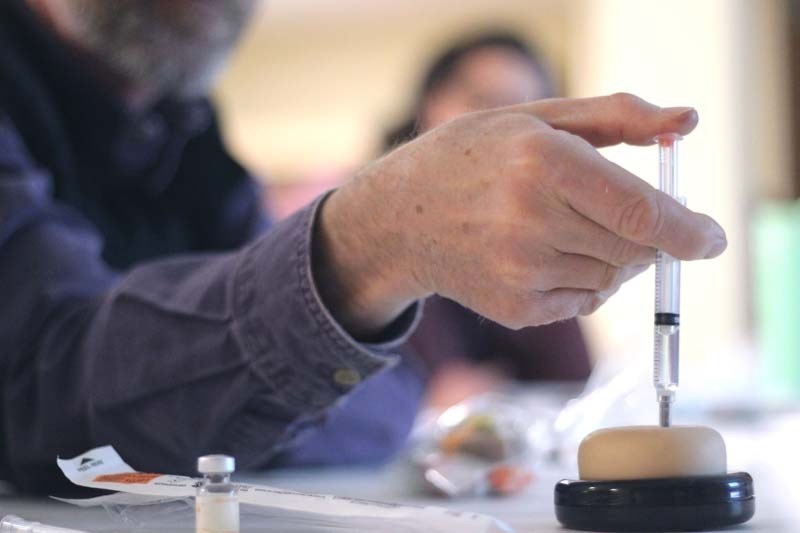A member of Cochrane Fire Services is concerned that the concept of prevention has fallen by the wayside as emergency services tackle the opioid crisis in Alberta.
Lt. Jeff Avery, fire prevention officer, made the comments near the end of a presentation to professionals in the health and social services industries hosted by the Cochrane Family and Community Support Services (FCSS) last week.
The presentation, held by Monica Dickson with Safeworks, provided an in-depth look at opioid use, abuse and how to administer its antidote. Safeworks is a harm reduction program that offers needle exchanges, supervised consumption and education and prevention programs.
Avery said while safe injection sites are attributed to saving lives, he is worried preventative measures are falling behind.
“In my mind, we’re failing these people. If we go to a call where somebody is attempting to commit suicide, we take them to the hospital no matter what, no questions asked,” Avery said. “Now somebody overdoses they’ll go to the hospital, a doctor will say ‘don’t do that again it could kill you,’ (then) we’re at his house four hours later,” Avery said referring to a caller Cochrane emergency services responded to about five times in one weekend regarding an opioid overdose.
Avery wondered aloud to the room why the same treatment isn’t made to drug addicts as for someone who is brought to the hospital relating to mental health issues, where a court order can require they see a therapist.
“To me, he’s harming his body, and he’s going to die sooner or later. Why are we not doing that same thing for that individual; getting that court order to help them get better?” Avery said to the room. “I think we’re falling behind on the prevention part and it’s almost like we’ve given up on the prevention part.”
Dickson said with the increased prevalence of the drug, there’s no longer an easy way to tell drug users to watch out for a specific appearance.
“Fentanyl is kind of in everything at this point... “Fentanyl is now being sold in many colours, many varieties, so some Fentanyl tabs look pharmaceutical and are made in pill presses,” she said. “I have heard of suckers and gummy bears with Fentanyl in them as well.”
Fentanyl, Dickson explained, is a type of opioid and in recent years has been found mixed into virtually every street drug, including marijuana. The drug is a strong, odourless and tasteless synthetic narcotic and can be between 50 to 100 times more potent than morphine, typically prescribed to control severe pain but illicit forms of the drug can be much more potent.
According to the Alberta government, four grains of Fentanyl is enough to kill an average adult.
There is no data available for small municipalities, including Cochrane on Fentanyl overdoses and deaths. However, in 2017 Fentanyl took the lives of 562 Albertans, with approximately 241 occurring in the first half of the year.
It’s a sharp contrast to the number of deaths in 2011, when the crisis first surfaced in Alberta and saw less than 6 overdose deaths for the whole year.
During the presentation, Dickson went over myths on antidotes for the drugs, which she encouraged audience members working directly with those addicted to the drug to share with their clients.
One tip she advised was not using a bath, shower or any kind of water to attempt to “sober” or wake someone up from an overdose as it could cause drowning. She also said tolerance of Fentanyl can change as soon as a 24 hour cycle. The amount of Fentanyl in street drugs can change in each batch so it is also impossible to know how much you are taking each time.
Dickson demonstrated how to administer naloxone - a temporary antidote of the drug until emergency responders arrive. Audience members were given practice syringes and vials of naloxone, and a pad to practice injecting the antidote.




